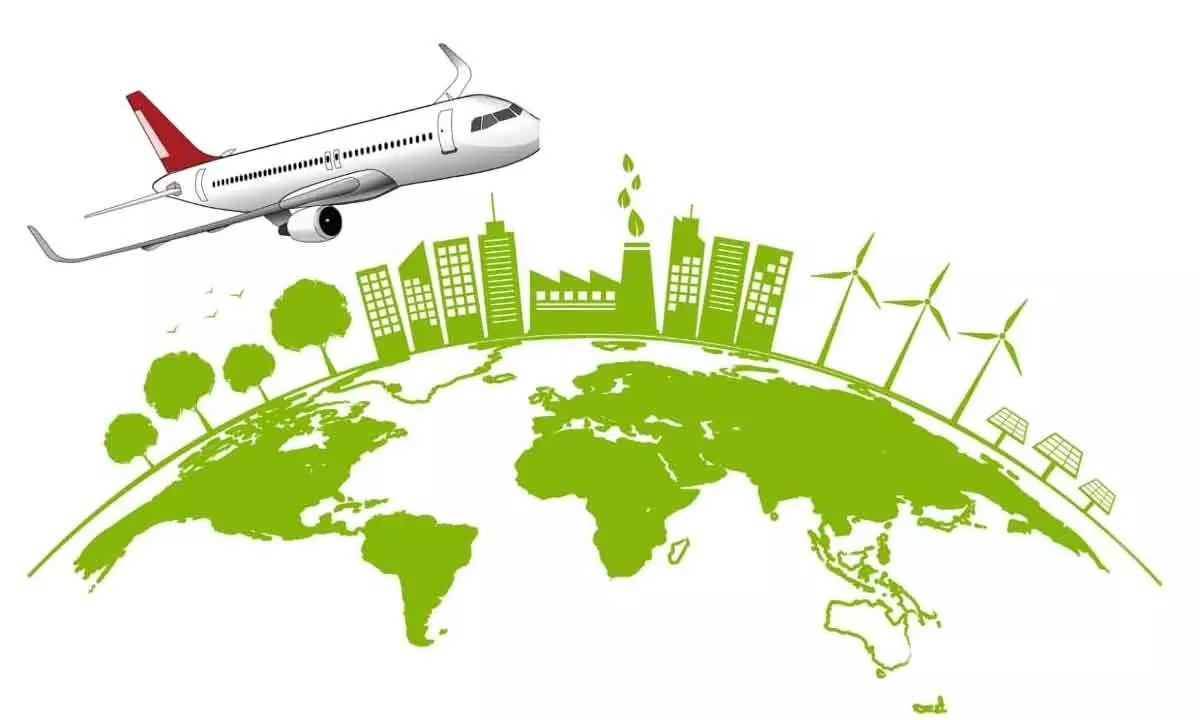Myriad challenges up ahead for aviation emissions
image for illustrative purpose

In the coming years, India’s aviation sector is expected to grow in double digits, propelling it to the third-largest air passenger market by 2030. Given the expected growth in domestic travel, decarbonizing the sector is essential the country to remain committed to its Nationally Determined Contributions (NDC) agenda. Having set its sight on becoming energy independent by 2047 and achieving Net Zero by 2070, it is imperative to increase use of renewable energy across all economic spheres, which is the cornerstone for bring about energy transition.
Green hydrogen (GH2) is considered as a promising alternative for enabling the transition. Hydrogen can be utilized for long-duration storage of renewable energy, replacement of fossil fuels in industry, clean transportation and potentially for decentralized power generation, aviation and marine transport. GH2 is expected to become the next-gen, low-carbon solution to decarbonize hard-to-abate industries, long-distance transportation and also the agriculture sector. Many big economies like the USA, China, Japan, Germany and India, are betting on GH2 to reduce their carbon footprints. Each of them has announced significant investments in GH2 with in-built provisions to cater to the rapidly firming export demand.
To decisively steer towards the net-zero path by 2050 for the globe, an annual average of $136 billion is necessary across the hydrogen value chain between 2023 and 2050; the world is looking at a significant investment gap of $790 billion by 2030. To bridge this viability gap and to facilitate an equitable clean energy transition, existing subsidies provided to carbon-intensive fuels like diesel, kerosene and LPG have to be phased out, while also meeting the needs of less-privileged communities.
The savings so achieved can be used to reduce or eliminate trade-related barriers on products and services that support faster clean energy adoption to create a level playing field for emerging substitutes like GH2 and its derivatives. This can help boost green innovations like clean-tech solutions and development of adaptation measures. Sustainable Aviation Fuel, or SAF, made from waste and agricultural by-products or power-to-liquid based on hydrogen technology can be 100% less carbon-intensive than traditional jet fuel over its lifecycle. Early adoption of SAF can provide environmental and economic benefits at 10 times higher than initial costs as India's aviation sector grows, while progressing on global climate goals. India is well placed to become a leader in the SAF industry, given the feedstock and low-cost solar energy.
SAF is a bio-fuel that can be blended with conventional jet fuel without the need to develop new planes or engines. It can reduce carbon emissions by up to 80%. In early January, the central government set a target of one per cent blending of sustainable aviation, which double by 2028 and become 5% by 2030. India is a big consumer of edible oil. Diverting even 10% of that towards aviation can help fulfill the needs of not only the sector but also of one third of Europe till 2030, which can be a shot in the arm for the economy.
However, if India doesn’t take the first-mover advantage in the utilization of SAF, its growing domestic aviation volume will diminish compliance with its climate change commitments. Support from the government by way of aviation-related and climate-conscious policies and incentives will accelerate efforts to make India net-zero in aviation by 2050.

